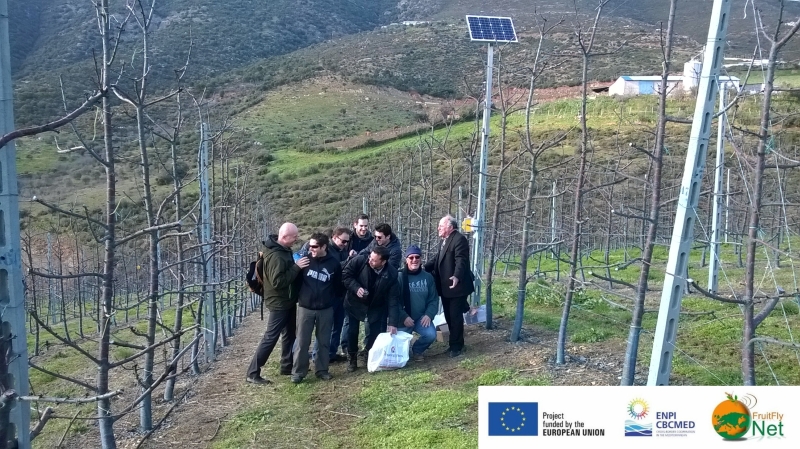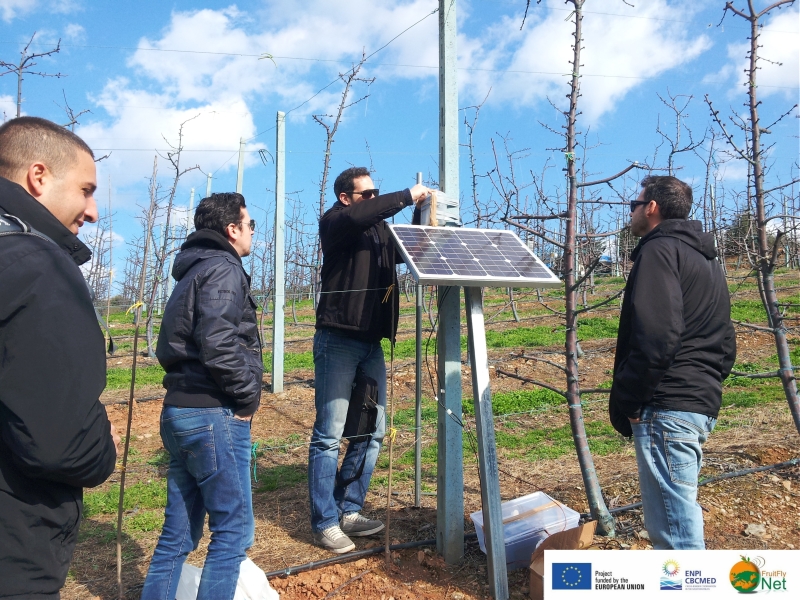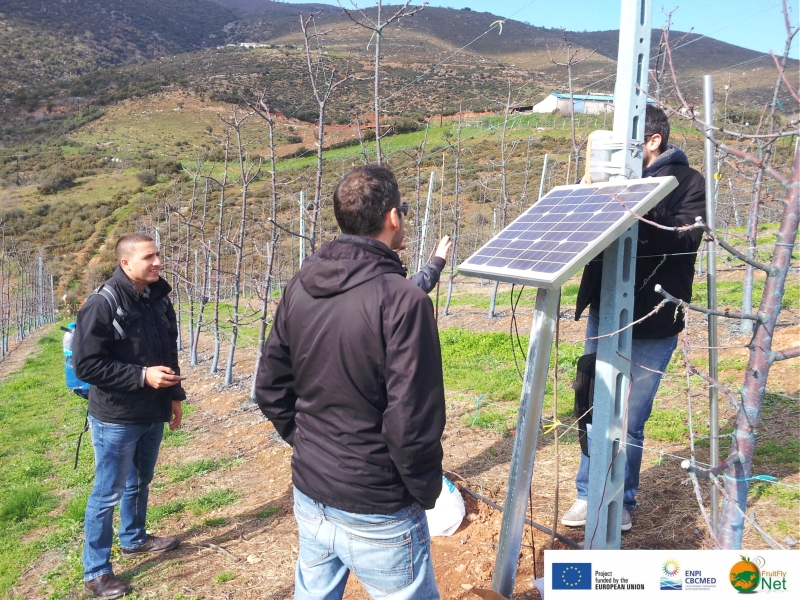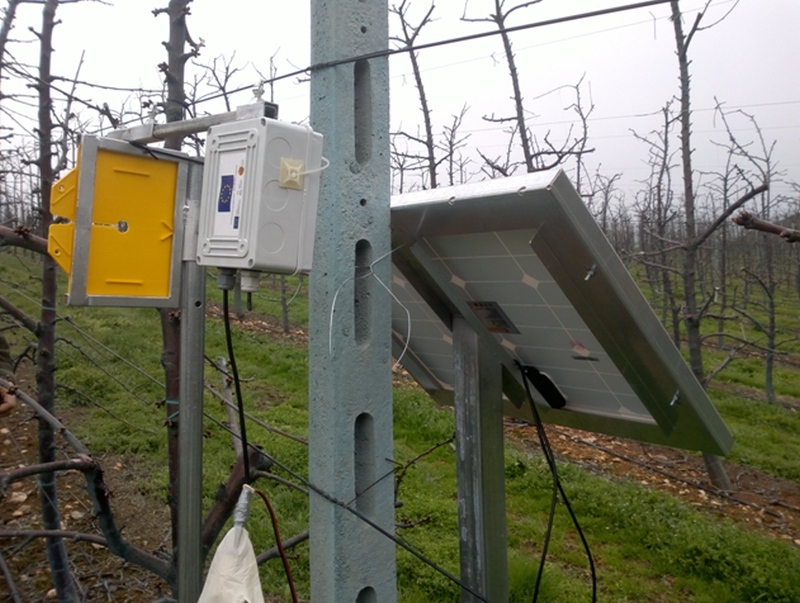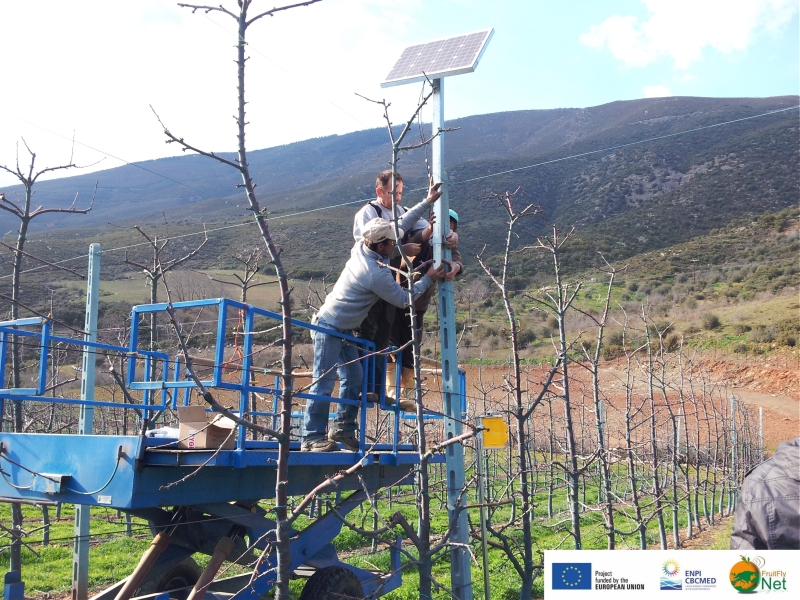The first e-traps in the world for the cherry fly have been deployed in Agia, Greece (CherryFlyNet).
The European cherry fly, Rhagoletis cerasi (Diptera: Tephritidae) is probably the most important pest of cherries in Europe and Eastern Asia. Because fruit infestation takes place close to harvest, control measure (mainly based on insecticide sprays) should be applied on ripening or ripe fruits. Trapping of adults is an essential tool towards accurately assessing the timing for insecticidal application. Nevertheless, so far there is no reliable odor attractant for this species, and trapping is based on generic visual stimuli (usually a 3-D yellow sticky cardboards, known as Rebell traps). As a result, farmers are often unable to detect, interpret and even utilize trapping data, as these traps have to be serviced and inspected at regular intervals, while the identification of the adults captured needs trained personnel. For this reason, and within the project FruitFlyNet, e-traps have been developed to transmit trapping information in a real time manner to a web-based platform and are expected to accurately identify adult cherry flies captured. Trapping, environmental, biological and other information are entered in the Decision Support System (DSS), that is using pest management algorithms to provide control decisions for the European cherry fly. All these data, including the “decision” to spray or not, are directly forwarded to the farmer by the system. At the same time, the system provides a spatio-temporal infestation risk mapping which can be utilized by the farmer for local applications. The entire system, which is called CherryFlyNet, is completely controlled and operated automatically by the system, without the need of having trap inspectors or attendants.
Specifically, in March 2015, in Agia, Greece, which is among the most important cherry and apple growing areas of Greece, the first e-traps (developed in the framework of the project) were placed in three large commercial orchards. At the same period the team of AUA together with the UTH team developed a detailed Decision Support System (DSS), to precisely determine the risk area and remotely guide the spraying using database and web-services developed by AUA. ReTIC and DSS will be integrated into LAS (Location-Aware Systems) in different crops to drastically reduce pesticide utilization while preserving fruit quality.
Project Coordinator Prof. T. Tsiligiridis of AUA, who was present during the trap placement in March, indicated: “To our knowledge, this is the first time in the world that e-traps are used for this species. This system is expected to greatly contribute to the improvement of cherry fly control, but also to the overall reduction of the number of insecticidal applications and residues on the fruit”. Prof. N. Papadopoulos, and Coordinator of the project for the UTH, pointed out that “adoption of this and other similar pest management systems supports the protection of the agricultural environment and therefore the sustainable agricultural production”.
The first yellow – sticky ReTIC trap was deployed in melon tunnels in the Arava, Israel and soon another type of ReTIC trap, the modified delta, will be deployed in Italy.
